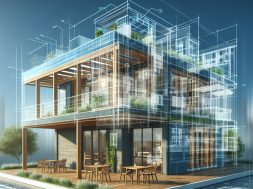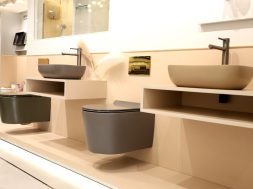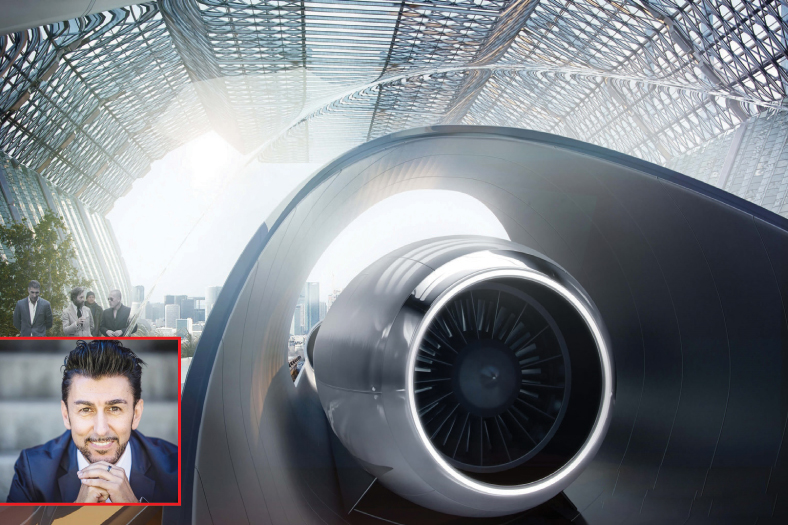‘Woman with the Steel determination’
From strongly advocating the use of Thermex® rebars to the incorrect practice of using cold twisted deformed bars; Radhika Markan, CEO of Thermex Rebar Manufacturers’ Association (TRMA) depicts her firm stand
What is the objective of setting up TRMA?There are almost 150 Thermex® installations in the Indian region. This region comprises India, Pakistan, Nepal, Sri Lanka and Bhutan. With such a large number of Thermex® licensed producers, the need for a cohesive association was felt. And thus TRMA was born.
As one united group, TRMA aims to uplift the quality of steel rebars used in India’s civil construction by spreading awareness of desirable properties in rebars amongst the civil engineering fraternity. Towards this objective we will travel to many cities to deliver a factual and comprehensive talk on various aspects of steel rebars. We hope our expose of the myths and realities of steel reinforcement will clear the confusion and doubts that exist.
As part of your all-India campaign on steel reinforcement, you have organised seminars in Mumbai and Chennai. What’s next?We have received requests to host seminars in Pune, Bangalore, Raipur and Kolkata. We are reviewing these proposals and shall decide soon. In the meantime we continue to meet structural engineers and consulting firms. At these one-to-one meetings we make detailed presentations on the nature of India’s rebar requirement, current malpractices in the field of steel reinforcement, and the guidelines to be followed to ensure proper steel reinforcement in line with global standards.
TRMA is also demanding a new Indian Standard (IS) code. Can you list out the drawbacks of the previous code and your recommendations for a new code?The IS code for rebars that has developed over the past few decades does not seem to be consistently moving ahead. For every one step taken forward, there have been two backward steps. As a result the engineering community is confused; the rebar manufacturers find the code impractical to implement in reality, and the laboratories find the code difficult to understand. This has led some laboratories including government accredited laboratories to conclude incorrect results. We have a copy of some of these faulty reports.
Some of the drawbacks of the code are:
The new Indian Standard IS:1786-2008 gives a license for use of improper quenching technology by stating that non-uniform peripheral quenching was not a ground for rejection!
The new code has 7 different rebar grades with 7 different chemical compositions, making it practically impossible to implement in reality.
The code advocates total elongation at fracture, which is of no structural value, instead of uniform elongation which has been specified in all new global codes.
The previous IS code: 1786-1985 used the term ‘thermo-mechanical treatment’ (TMT) for the ‘Tempcore’ and ‘ Thermex®’ quenching and self tempering processes introduced in that period. The incorrect use of the ‘TMT’ phrase continues to date even though there is no mechanical treatment in quenching processes.
A good code is one which is simple to implement at the ground level and meets the requirements of seismic India. It should consist of few grades, and for each of these grades it should specify the minimum and maximum levels of yield strength.
The code should specify the same chemical composition for all grades. Further, for seismic areas the code should specify high ductility (stress ratio and uniform elongation) even for high yield strengths.
No reference should be made to TMT. Instead, the code should use the correct global term which is ‘Quenching and Self Tempering’ (QST) or ‘Quenching and Tempering’ (Q&T).
It is not just TRMA that is urging the government to take proper steps and come up with a strong, advanced, and progressive code. Other structural engineers too have been pressing for the same. Here I must say that it is gratifying to know that some of these drawbacks are being addressed, and an amendment to IS:1786-2008 is under consideration.
CTD (cold twisted deformed) bars are believed to be of higher strength, but TRMA denounces the practice of using CTD bars. Why?It is an incorrect premise that CTD bars exhibit higher strength. Rebars produced using ‘quenching and self-tempering’ technologies exhibit higher strength than CTD bars which are limited to yield strength of 415MPa or in some cases 500MPa. Quenched and self tempered bars display yield strength up to 600MPa.
It is common knowledge in the steel industry that cold working raises steel strength. Thus CTD bar was an initial, natural development four decades ago for the manufactures of rebars to satisfy the basic requirement of civil engineers – that is high strength so that less steel could be used in RCC construction.
The CTD process, developed in Europe around 1966, gained initial acceptance in the civil sector and consequently many rolling mills started producing CTD bars. But CTD bars had inherent drawbacks in quality and this was discovered shortly. CTD bars raised yield strength, but at the cost of ductility. Further, the process of cold twisting introduced surface stresses on the bars and such bars had a very high rate of surface corrosion. CTD bars lying at the project site rusted at a rapid rate. Additionally, these CTD rebars were, on account of poor ductility, unsuitable for use in seismic areas. Here it is important to note that 60 per cent of India lies in the high-hazard seismic region.
Actually, the civil engineers around the world were looking for rebars of 500MPa with high ductility and CTD bars apparently failed on this count. Since CTD bars did not fulfill civil industry demand for 500 Grade bars with ductility and weldability, and since they were prone to rapid corrosion, their acceptance in Europe stopped around 1972. But In India CTD bars, sold under the brand name ‘Torsteel’, gained a major foothold and the patent holder started a vigorous and very successful campaign. CTD bars were being used in India from 1968 onwards; and despite their inherent drawbacks continue to be used by builders even today.
And so TRMA is pointing out that the new technologies are available which can produce rebars to satisfy civil engineer requirements.
Can you share the advantages of Thermex® rebars?On the technical front I would say that the German patented Thermex® Quenching and Self-Tempering technology enables production of desired high-strength steel reinforcement bars that meet all requirements of civil construction – yield strength ranging from 500MPa or more, toughness, ductility, weldability and excellent bend properties. Ductility is key as it prevents the rebar from snapping outright and causing the immediate collapse of a building during an earthquake. High-strength, high-ductility rebars drastically reduce the risks of total building collapse thereby increasing the opportunity for residents to escape instead of being crushed to death.
On the commercial front too there are advantages as Thermex® installations in India total almost 140. No matter where you are located; you can procure Thermex® bars that meet a pre-determined technical and quality standard. So there is all-India availability at short notice. Now you may ask how one can assure consistency in quality. H&K India, the sole Thermex® supplier in the Indian region spends close to `1 crore annually in third-party quality audit. Thermex® rebars from each licensee are audited once every quarter to ensure that besides meeting the IS Code, they also a) exhibit uniform peripheral tempered martensite and b) meet the strict Thermex® standards of tensile properties and ductility as per global norms.
How do you see the acceptance of Thermex® rebars in India?Today approximately 60-65 per cent of the rebars produced in our country are manufactured by use of the Thermex® quenching system and technology. This is extremely impressive.
But this was not the case in 1992 when the first Thermex® system was installed in the Durgapur Steel Plant of SAIL. Since then a lot has been done to educate the engineering fraternity about the advantages of Thermex® rebars. There have been technical seminars, a sustained advertising campaign in steel and civil engineering publications for over 20 years, sponsorship of infrastructure-related conferences etc. But most importantly, the technology speaks for itself. Word-of-mouth appreciation by satisfied mill owners has created positive publicity and endorsement for the technology within the industry. It is no wonder that Thermex® enjoys front-runner status in the world for ‘quenching and self-tempering’ technology.
Where do you see the Thermex® rebars industry in India 5 years down the line?Today many government entities and big contracting firms procure rebars only from primary producers. I hope that 5 years down the line these companies turn to Thermex® rebar manufacturers, on account of all the benefits I have mentioned earlier.
Cookie Consent
We use cookies to personalize your experience. By continuing to visit this website you agree to our Terms & Conditions, Privacy Policy and Cookie Policy.






